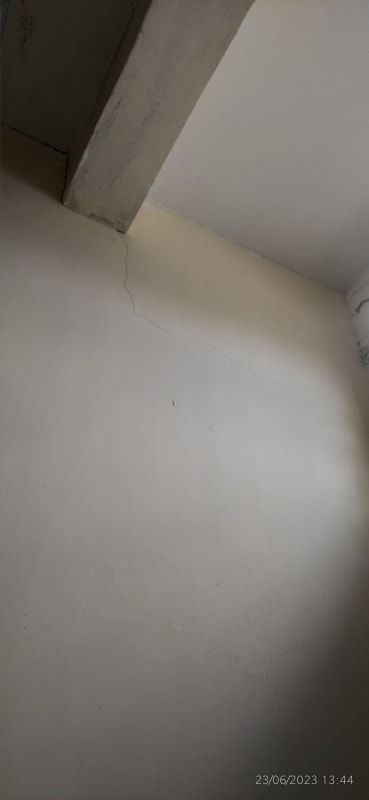Masonry infill wall was constructed and 6 months later this cracks that start at the junction of the wall and the soffit of perpendicularly running 1st floor beams have occured, 3 in no. all starting at a beam junction. Wall is natural stone masonry, 200mm thick
 1st floor slab has offices with aluminium/gypsum board partions. Could the cause be the sagging of the 1st floor beams?
1st floor slab has offices with aluminium/gypsum board partions. Could the cause be the sagging of the 1st floor beams?

